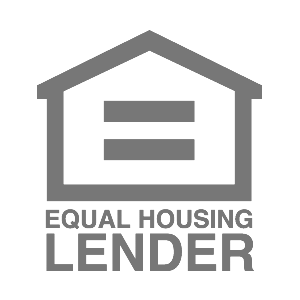Conventional wisdom says that entering retirement with no debt is the goal when it comes to retirement strategies. Sure, that may be possible for some people, but there are other retirement strategies to consider should you find yourself in a different spot during your golden years.

Before we get into the pros and cons of using a home equity line of credit (HELOC) in retirement, it’s crucial to note that a HELOC is a secured form of credit. Specifically, it’s secured by your home. That means, if you fail to make your HELOC payments, you may risk losing your home. Keep this in mind when deciding if a HELOC is the right option for you. You should consult your tax advisor and/or attorney to understand the tax and legal implications of the strategies and financial products in this article.
Planning for Retirement as a Homeowner
Estimates vary, but some financial advisors posit that most people will need to have saved enough resources to spend between 55% and 80% of their preretirement income each year to maintain their current lifestyle and habits (like traveling and dining out) during retirement. Of course, not everyone will be able to accumulate that much wealth in a 401(k) or IRA. Having at least one large asset to utilize during retirement, like a (paid-off) home, could be beneficial.
Here are 3 ways homeowners might consider using a home equity line of credit to prepare for, and thrive during, their retirement.
1. Limit Pre-Tax Retirement Account Withdrawals
It’s likely that most, if not all of the money in your retirement plan is pre-tax. This means that when you withdraw those funds, you create a taxable event, increasing your taxable income every year in which you pull out retirement money. If you retire and draw money from your 401(k) or IRA before age 59 ½, you may also face an early withdrawal tax penalty.
Using the equity in your home through a HELOC is one of the available retirement strategies that may allow you to leave some or all of your pre-tax retirement money untouched, at least for a period of time, while you lean on a HELOC to finance your expenses. This allows your retirement accounts to continue earning dividends and possibly grow in value.
Keep in mind, though, there are risks associated with a HELOC. The money you draw from a HELOC must eventually be paid back. Because the line of credit is secured against the equity in your home, you risk losing your home if you don’t make those HELOC payments.
2. Cover Unexpected Retirement Expenses
While accessing money from a home equity line of credit is not income, drawing from a HELOC is one of the retirement strategies that could help finance unexpected expenses, like medical bills or substantial home repairs, without drawing directly from your retirement savings nest egg to pay for the expense.
If your social security, investment dividends, and/or pension payments won’t be enough to cover life’s inevitable emergencies during retirement, using the equity in your home at an interest rate typically lower than credit cards or personal loans may be an option to consider. With a HELOC, you can spread those payments out over time, rather than having to pay for the expense upfront.
3. Upgrade Your Home
Chances are, you’ll own your home outright by the time you reach retirement age. This not only means that you could have plenty of equity to tap into, but you may also be more inclined to stay put instead of selling, moving, buying a new home, and starting anew with another mortgage payment.
Therefore, one of the retirement strategies in which a HELOC could prove helpful is to upgrade your home. Using the equity in your home to make it more accessible and comfortable could make your retirement years more enjoyable. After all, what better time than retirement to build that kitchen you’ve always dreamed of?
How a HELOC Works
Before making any decisions about how to fund your dream retirement, it’s important to understand all of your options when it comes to possible retirement strategies. While a HELOC may help some retirees finance expenses, make home improvements, and put off 401(k) and IRA withdrawals, using the equity in your home means taking on new debt, which doesn’t come without risks.
This article is for educational purposes only; the information and strategies presented are not intended to be, and should not be considered, tax, financial or legal advice. The strategies mentioned in this article are general in nature and not directed to the specific objectives, needs, or tax or financial situation of any particular person. The financial products and strategies discussed in this article may have tax and legal consequences. You should consult your tax advisor and/or attorney to understand the tax and legal implications of the strategies and financial products mentioned in this article, and whether a HELOC makes sense for your specific financial situation and goals.
Read more
- What is the Debt Snowball Method?
- Saving vs. Investing: What’s the Difference?
- How to Save for Retirement at Any Age
- 7 Tips to Improve Your Personal Finances Before the New Year
- How Much Equity Do You Need for a HELOC?
Eligibility for a home equity loan or HELOC up to the maximum amount shown depends on the information provided in the home equity application. Depending on the lender, loans above $250,000 may require an in-home appraisal and title insurance. Depending on the lender, HELOC borrowers must take an initial draw of the greater of $50,000 or 50% of the total line amount at closing, except in Texas, where the minimum initial draw at closing is $60,000; subsequent HELOC draws are prohibited during the first 90 days following closing; after the first 90 days following closing, subsequent HELOC draws must be $1,000, or more, except in Texas, where the minimum subsequent draw amount is $4,000.
The amount of time it takes to get funds varies. It is measured from the time the lender receives all documents requested from the applicant and depends on the time it takes to verify information provided in the application. The time period calculation to get funds is based on the first 4 months of 2023 loan fundings, assumes the funds are wired, excludes weekends, and excludes the government-mandated disclosure waiting period.
For Texas home equity products through Prosper, funds cannot be used to pay (in part or in full) non-homestead debt at account opening.
Depending on the lender, qualified home equity applicants may borrow up to 80% – 95% of their primary home’s value and up to 80% – 90% of the value of a second home. In Texas, qualified applicants may borrow up to 80% of their home’s value. HELoan applicants may borrow up to 85% of the value of an investment property (not available for HELOCs).
Home equity products through Prosper may not be available in all states.
All home equity products are underwritten and issued by Prosper’s Lending Partners. Please see your agreement for details.
Prosper Marketplace, Inc. NMLS# 111473
Licensing & Disclosures | NMLS Consumer Access
